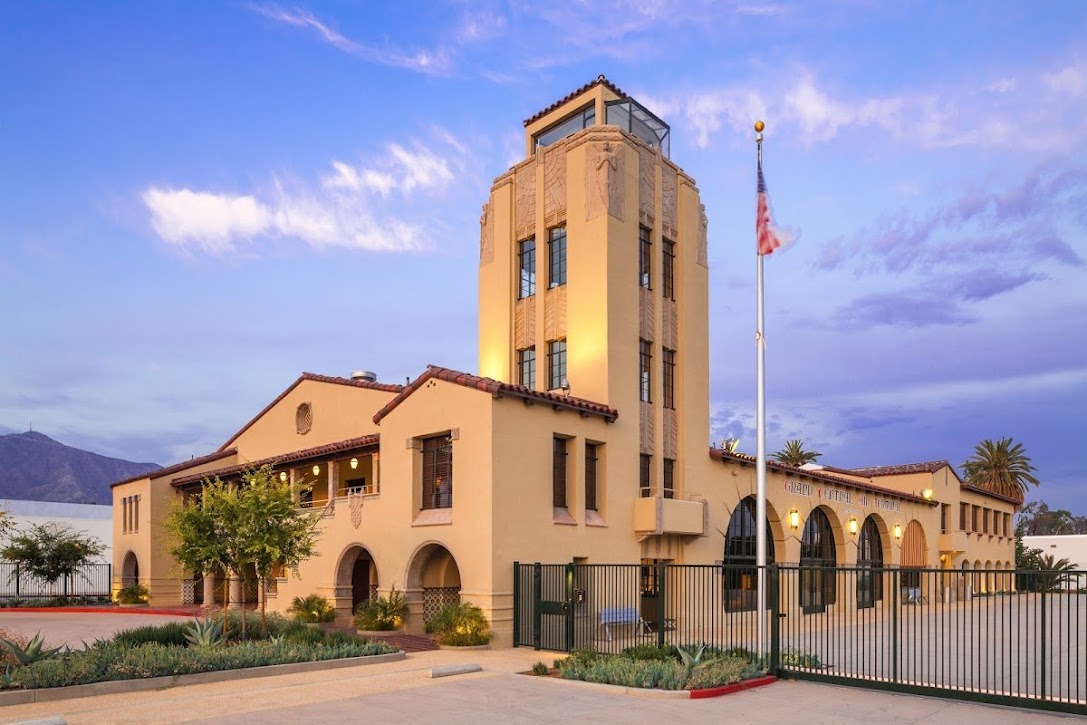In 1912, the Griffith family donated acreage alongside the Los Angeles River to the Aero Club of California to be used as an area in which to promote flying. Enthusiasts were immediately attracted to this level, sandy flat inside a sharp curve of the Los Angeles River. Although technically outside Glendale’s border, but really just a hop across the mostly dry Los Angeles River, everyone in the hills of the city could look down on “their airport.”
Glenn Martin established an aircraft factory there in 1912, and he used the field for flight operations and manufacturing. In 1915, recognizing the shortage of good engineers in the still under-developed southern California area, Martin wrote to MIT professor Jerome Hunsaker asking for help.
Hunsaker recommended a young (but very bright) student assistant named Donald Wills Douglas. Douglas came out to the Glendale plant and was surprised to see how primitive Martin’s design and testing program was. Douglas introduced Martin to engineering and technical testing principals from the new world of aircraft structural design.
Glenn Martin established an aircraft factory there in 1912, and he used the field for flight operations and manufacturing. In 1915, recognizing the shortage of good engineers in the still under-developed southern California area, Martin wrote to MIT professor Jerome Hunsaker asking for help.
Hunsaker recommended a young (but very bright) student assistant named Donald Wills Douglas. Douglas came out to the Glendale plant and was surprised to see how primitive Martin’s design and testing program was. Douglas introduced Martin to engineering and technical testing principals from the new world of aircraft structural design.
Bill Waterhouse and Lloyd Royer built the Romair bi-plane for Pacific Air Transport and the Cruizair monoplane at Glendale Airport. The Cruizair drawings were purchased by T.C. Ryan in San Diego and were modified into The Spirit of St. Louis.
Jack Northrop came to Glendale in 1927 after working for the Lougheed brothers in Santa Barbara. Northrop was developing metal wing structures, replacing the wood and cloth commonly used. Using “multi-cellular” metal construction design, his Avion Company made a prototype called the Avion EX-1. This novel aircraft (mostly wing with twin trailing booms) was the forerunner to Northrop’s flying wings of the late 1940s. When test flown by Eddie Bellande, it demonstrated that, as Northrop said, “The cleaner the airplane, the better it will fly.”
GCAT opened on Feb. 22, 1929, with a single 3,800-ft. concrete runway aligned with the prevailing northwest/southeast winds, the first concrete runway on the West Coast.
Opening day saw thousands of local citizens in attendance. As Glendale is only 15 minutes from the San Fernando Valley where the Hollywood elite maintained their ranches, the crowd included Tom Mix, Wallace Beery, Gary Cooper, Mary Pickford, Jean Harlow and many other elite. The governor of California, C.C. Young, was flown in by Roscoe Turner to mark the occasion.
Over the years, other Hollywood names would pass through Glendale, many learning to fly there. These included Jimmy Stewart, Clark Gable, Carole Lombard, Knute Rockne, Louis B. Mayer, Mary Aster, Jack Warner and Charlie Chaplin
Howard Hughes set up in a small building on the edge of Grand Central Airport in 1934. He and Dick Palmer, with a crew of Cal-Tech engineers, began work on the Hughes A-1 Racer. They used the Guggenheim Wind Tunnel at Cal-Tech (formerly the Throop College of Technology) in Pasadena. In 1935, Hughes set a speed record of 352 mph in the sleek new racer.
When Walt Disney was developing Disneyland in the early 1950s, he wanted a place away from the main studio where he could work on new ideas undisturbed. He rented an industrial building at 1401 Flower St. on the old airport property. WED (Walter E. Disney) Enterprises also rented the old terminal building during the busy years of Epcot and Disney World development.
Dreamworks was created in 1994, and their new buildings soon appeared on part of the old airport land just down the street from Disney’s leased building. The Disney Corporation soon purchased the remaining land from the airport and have announced a 15-year plan to turn it into a corporate “creative campus” behind security gates.
Dreamworks was created in 1994, and their new buildings soon appeared on part of the old airport land just down the street from Disney’s leased building. The Disney Corporation soon purchased the remaining land from the airport and have announced a 15-year plan to turn it into a corporate “creative campus” behind security gates.





No comments:
Post a Comment